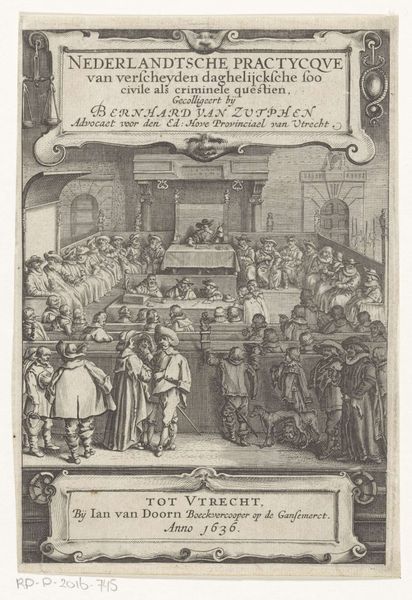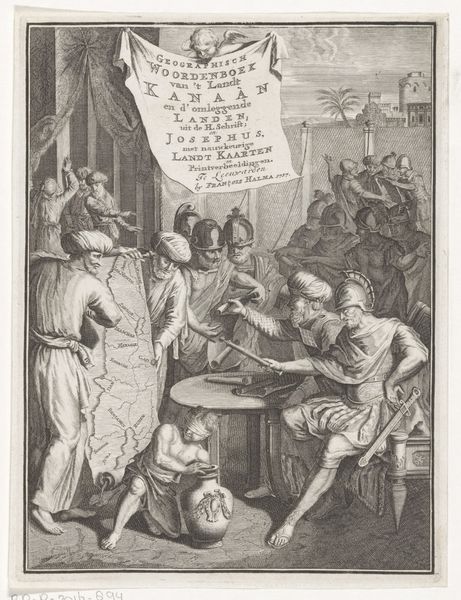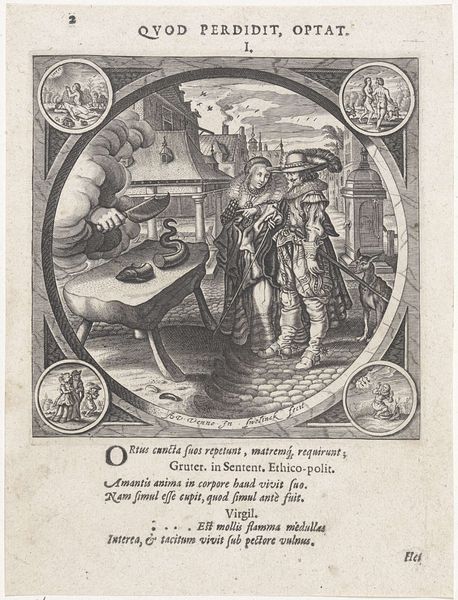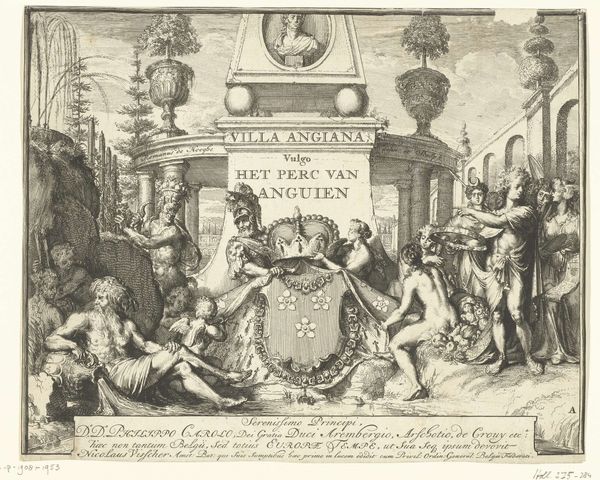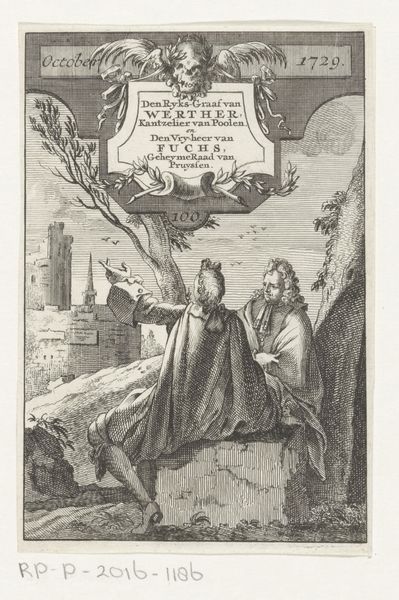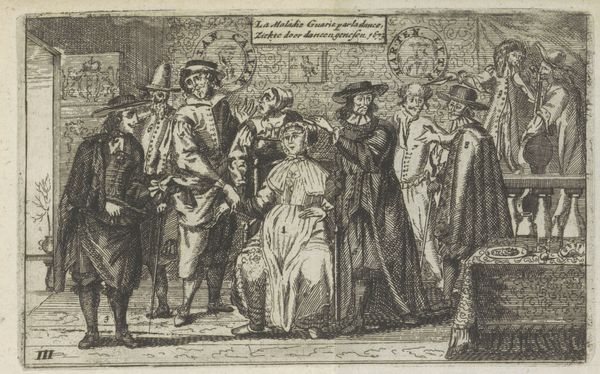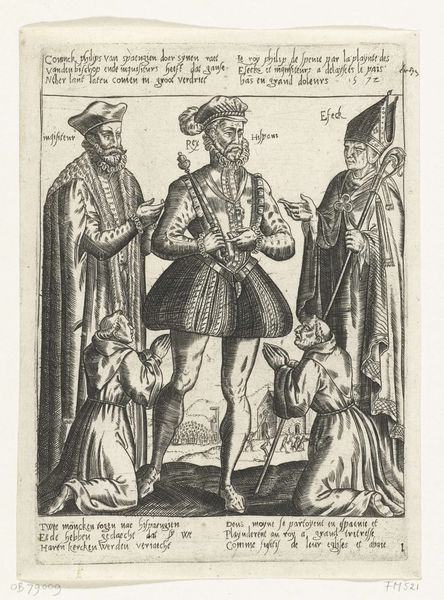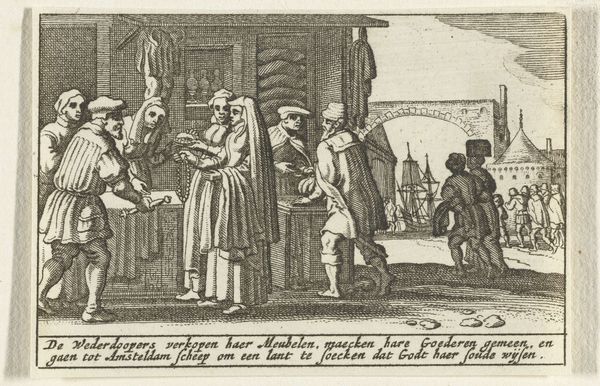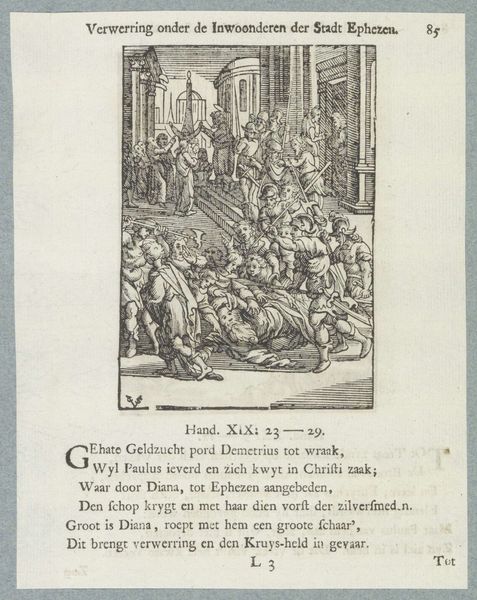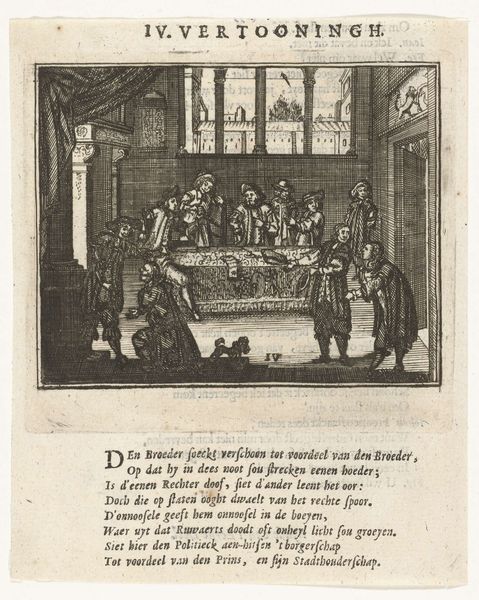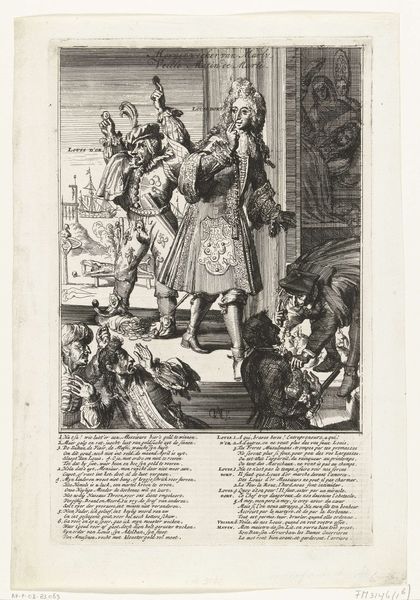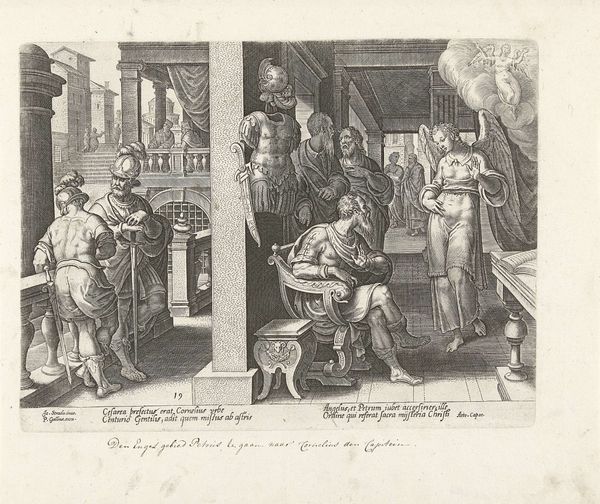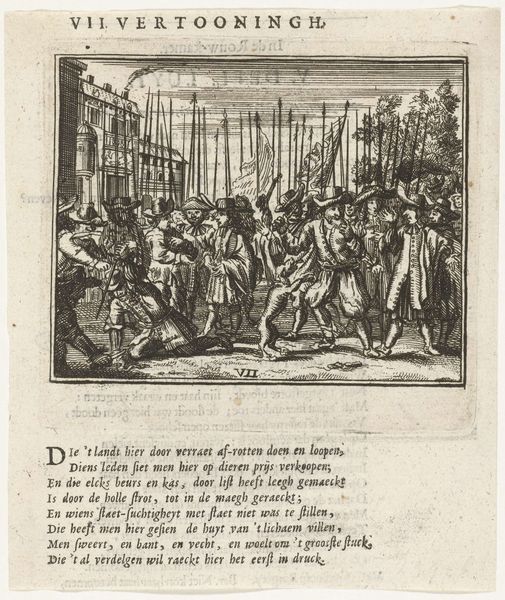
print, engraving, architecture
#
baroque
#
dutch-golden-age
# print
#
old engraving style
#
cityscape
#
history-painting
#
engraving
#
architecture
Dimensions: height 274 mm, width 172 mm
Copyright: Rijks Museum: Open Domain
This print by Theodor Matham, made in Amsterdam in 1648, is a copper engraving. That means the artist would have used a sharp tool called a burin to incise lines into a copper plate, creating an image in reverse. The incised lines hold ink when the plate is printed, resulting in the detailed lines and shading you see here. Look closely and you'll see the crisp precision this technique allows, giving the scene a remarkable clarity. We see an engineer presenting a fortification plan, likely intended to impress potential patrons. The choice of copper engraving itself speaks to the cultural significance of printmaking during this period, when printed images circulated widely, spreading ideas and knowledge. The labor-intensive process also elevated the status of the artwork, suggesting a level of craft and expertise valued by the elite. It really shows the interplay between art, engineering, and the power structures of the time.
Comments
No comments
Be the first to comment and join the conversation on the ultimate creative platform.
